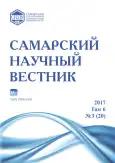How to map submerged Stone Age sites using acoustics (some experimental results)
- Authors: Grøn O.1, Boldreel L.O.1, Hermand J.2, Rasmussen H.3, Dell’Anno A.4, Cvikel D.5, Galili E.6, Madsen B.7, Nørmark E.8
-
Affiliations:
- University of Copenhagen
- Université libre de Bruxelles
- Danish Nitro-Electro
- Università Politecnica delle Marche
- University of Haifa
- Israel Antiquities Authority
- Museum of Eastern Jutland
- Aarhus University
- Issue: Vol 6, No 3 (2017)
- Pages: 197-202
- Section: 07.00.00 – Historical Sciences and Archaeology
- URL: https://journals.rcsi.science/2309-4370/article/view/22087
- DOI: https://doi.org/10.17816/snv201763218
- ID: 22087
Cite item
Full Text
Abstract
A central problem for maritime archaeology has been to find survey methods that facilitate efficient and precise mapping of Stone Age sites on the seabed down to the lowest sea level (approximately – 140 m) during glacial periods, as well as sites embedded in sea-floor sediments. As predictive landscape modelling has proved to be inadequate for this task, a different approach based on direct detection is required. The observation of an acoustic phenomenon associated with man-made flint debitage – but not naturally cracked pieces of flint – has opened a window for development of an alternative and efficient direct mapping method. This paper discusses the development of the idea, as well as experimental documentation of the principle on which it is based. It includes a preliminary analysis of how far away on each side of the transducer flint debitage emits an acoustic response, and consequently the required distance between sailing lines for a comprehensive survey to be undertaken at a specific depth.
Full Text
##article.viewOnOriginalSite##About the authors
Ole Grøn
University of Copenhagen
Author for correspondence.
Email: example@snv63.ru
researcher of Department of Geosciences and Natural Resource Management
Denmark, CopenhagenLars Ole Boldreel
University of Copenhagen
Email: example@snv63.ru
doctor, associate professor of Department of Geosciences and Natural Resource Management
Denmark, CopenhagenJean-Pierre Hermand
Université libre de Bruxelles
Email: example@snv63.ru
professor of Acoustics & Environmental Hydroacoustics Laboratory
Belgium, BrusselsHugo Rasmussen
Danish Nitro-Electro
Email: example@snv63.ru
engineer
Denmark, CopenhagenAntonio Dell’Anno
Università Politecnica delle Marche
Email: example@snv63.ru
doctor, associate professor of Department of Life and Environmental Sciences
Italy, AnconaDeborah Cvikel
University of Haifa
Email: example@snv63.ru
doctor, researcher of Leon Recanati Institute for Maritime Studies
Israel, HaifaEhud Galili
Israel Antiquities Authority
Email: example@snv63.ru
doctor
Israel, AtlitBo Madsen
Museum of Eastern Jutland
Email: example@snv63.ru
candidate of sciences
Denmark, RandersEgon Nørmark
Aarhus University
Email: example@snv63.ru
head of laboratory of Department of Geoscience
Denmark, AarhusReferences
- Knapp W.R. Some Talk About Angles / (ed.) M. Lynn, Flint Knapping. Articles, Tips, and Tutorials from the Internet. 3rd Edition. 2010. P. 163-164.
- Grøn et al. - in prep.
- Grøn O. Our grandfather sent the elk - some problems for hunter-gatherer predictive modelling. Quartär 59. 2012. P. 175-188.
- Grøn O. The «fishing-site model» - a method for locating Stone Age settlements under water, or the opposite? // Norwegian version published in Norsk Maritimt Museum, Årbok 2014. P. 235-244.
- Rasmussen H. Unpublished report on the acoustic resonance characteristics of flint debitage. 1982.
- Hermand J.-P., Grøn O., Asch M., Ren Q. Modelling flint acoustics for detection of submerged Stone Age sites. Proc. OCEANS’11 MTS/IEEE Kona Conf. (Oceans of Opportunity: International cooperation and partnership across the Pacific), Institute of Electrical and Electronics Engineers, IEEE, Sept. 2011. 9 p.
- Hermand J.-P., Tayong R. Geoacoustic characterization of Stone Age cultural layers: Preliminary FE modelling. OCEANS - Bergen, 2013 MTS/IEEE, 6 p.
- Grøn O., Nørgård Jørgensen A., Hoffmann G. Marine Archaeological Survey by High-Resolution Sub-Bottom Profilers. Norsk Sjøfartsmuseum, Årbok. 2007. P. 115-144.
- Grøn O., Boldreel L.O. Chirping for Large-Scale Maritime Archaeological Survey: A Strategy Developed from a Practical Experience-Based Approach. Journal of Archaeology Volume 2014, Article ID 147390. 11 p.
- Dencker J. Marinarkæologiske Forundersøgelser. Amager Strandpark NMU j.nr. 2322 & Italiensvej NMU j.nr. 2322. Nationalmuseets Marinarkæologiske Undersøgelser. 2004.
Supplementary files












